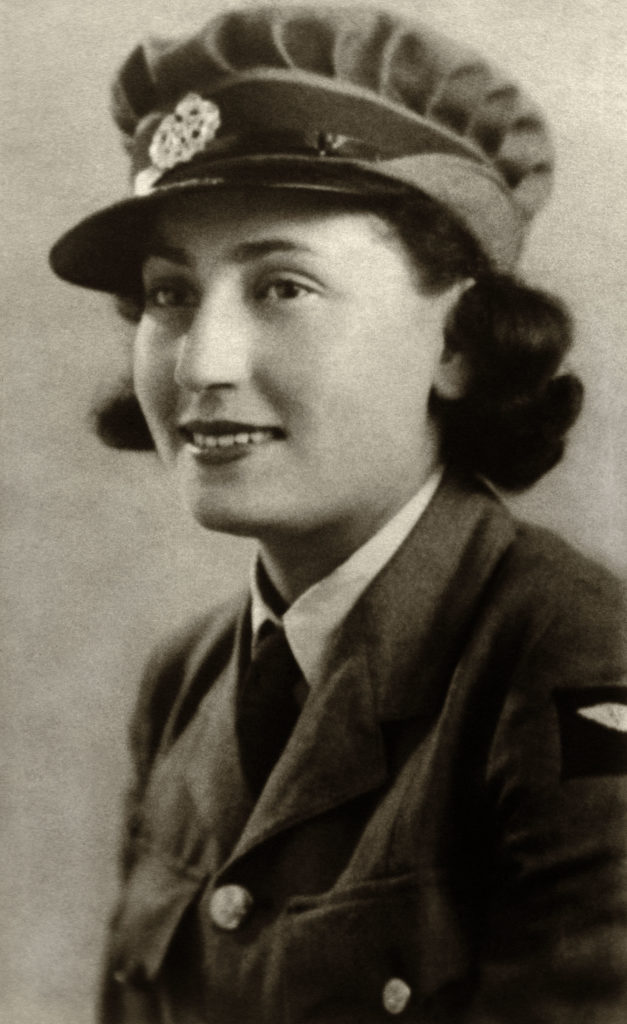An estimated 66,000 Jews served with Britain during World War II, ranging from Victoria Cross heroes and soldiers to secret agents and air raid wardens. In his meticulously researched new 240-page book, Jews in Uniform (priced at £25), photography archivist Michael Greisman brings together over 100 of their stories with portraits. Here, the author picks ten of his favourites from this moving collection and offers a glimpse of their incredible wartime roles.

1. Leonard Crystall
Leonard was a Royal Navy signalman on the light cruiser ‘Birmingham’. He was killed, aged 18, when his ship was hit by a torpedo from a U-boat in the eastern Mediterranean.
2. Vera Atkins CBE
Born Vera Rosenberg in Romania, she came to the UK in 1937.Fluent in French and German, she became assistant to Colonel Maurice Buckmaster who set up and ran the Special Operations Executive (SOE). Vera was responsible for recruiting British agents for occupied France, supervised their training and organised their reception in France. After the war, she devoted her life to finding out exactly what had happened to those who had died, ensuring that her lost agents each received official recognition with some women agents receiving posthumous awards.

3. Sylvia Fenton
Sylvia was a sergeant in the Women’s Auxiliary Air Force (WAAF) and was attached to Bomber Command. She was an active participant in the planning of the 1000-bomber raid on Cologne in 1942. For her contribution, Sylvia was ‘Mentioned in Despatches’ by a Senior Officer and sent to the High Command.
4. Ruth Bourne
Ruth joined the Women’s Royal Naval Service (WRNS) and selected for ‘special duties’. Transferred to Bletchley Park, the secret centre for Britain’s code-breakers, Ruth’s role was to operate the ‘Bombe’ computer, designed by Alan Turing, to decipher German secret messages encrypted by their ‘Enigma’ machines.

5.Joan Myers
Joan joined the Women’s Auxiliary Air Force (WAAF) and was trained as a Plotter and served in the Operations Room throughout the ‘Battle of Britain’. Stationed around a large map table, Joan was responsible for aircraft movements in a particular sector, changing plots regularly so that the whole picture of a raid could be monitored by the Group controllers who were in direct contact with the pilots.

6.Thomas (‘Tommy’) Gould VC
Tommy was a Royal Navy Petty Officer in a submarine operating off the coast of occupied Crete. Early in 1942, the submarine survived a bombing from the air and depth charges from German escorts .In darkness, the submarine surfaced and it was found two unexploded bombs had become wedged between the hull and upper deck. Tommy, together with the second-in-command, managed to remove the bombs and safely drop them overboard. Both were subsequently awarded the Victoria Cross (VC) for, as the citation states, ‘they would have certainly drowned if the submarine was detected by German patrols and had to crash-dive’.

7. Michael Gibbons DFM
At age 18, Michael volunteered for the RAF and was trained as a Flight Engineer on bombers. He was transferred to a ‘Special Duties’ squadron whose main function was to transport and drop agents and equipment in occupied Europe for the resistance movements. These were high-risk flights as they flew very low beneath enemy radar, taking place on moonlight nights and unaccompanied by escort fighters. By the end of the war, Michael had completed 40 missions and was awarded the Distinguished Flying Medal (DFM) for ‘acts of valour, courage and devotion to duty’. He was posthumously awarded the ‘Legion d’Honneur’, France’s highest accolade.

8.Elizabeth (‘Bessie’) Levy
In 1939, Bessie joined the Women’s Land Army nicknamed the ‘Land Girls’. Provided with a uniform and minimal training, she was located at a farm in Hertfordshire to harvest vegetables and look after the livestock. Land Girls provided extra agricultural labour and filled the shortage from male farm workers who were called up. The work was very strenuous and she worked long hours, especially in the summer. Bessie worked on the same farm until the end of the war and has very fond memories of her time there.

9. Ewen Montagu CBE QC DL
As a lawyer, Ewen was recruited into Naval Intelligence and with Charles Cholmondeley devised an amazing wartime deception known as ‘Operation Mincemeat’. It made the Germans believe that the Allies were going to attack in Greece in 1943 rather than Italy. Using the corpse of a Welsh tramp whose death could appear by drowning, he was given a new identity of a Captain in the Royal Marines with a detailed cover story. The body was released off the coast of Spain and the papers found on the dead man, including intelligence material, convinced the Germans that the Allies would indeed invade Greece with troops from Libya and Egypt. The audacious plan worked – German forces were diverted to Greece for several weeks until it was too late.

10. Marcus Bloom
Having lived in France for five years before the start of WW2, Marcus was recruited into the Special Operations Executive (SOE). In 1942,he arrived in France and was based in the Toulouse area. He arranged the transfer of weapons to Resistance groups and was closely linked to acts of sabotage on railway and telecommunication lines. He also reported back to London on the purpose of some closely guarded local factories. During 1943, Marcus’s presence was compromised and he was arrested by the SS. He was interrogated and tortured but only gave his interrogators his name, rank and service number. He survived until late 1944 when he was moved to Mauthausen concentration camp in Austria and executed along with 47 others.
Jews in Uniform by Michael Greisman is available from Amazon priced £25 and is distributed by York Publishing Services. It is A4 hardback with 240 pages and over 100 photographs. For first hand accounts of World War II courage and survival, subscribe to History of War for as little as £13.



